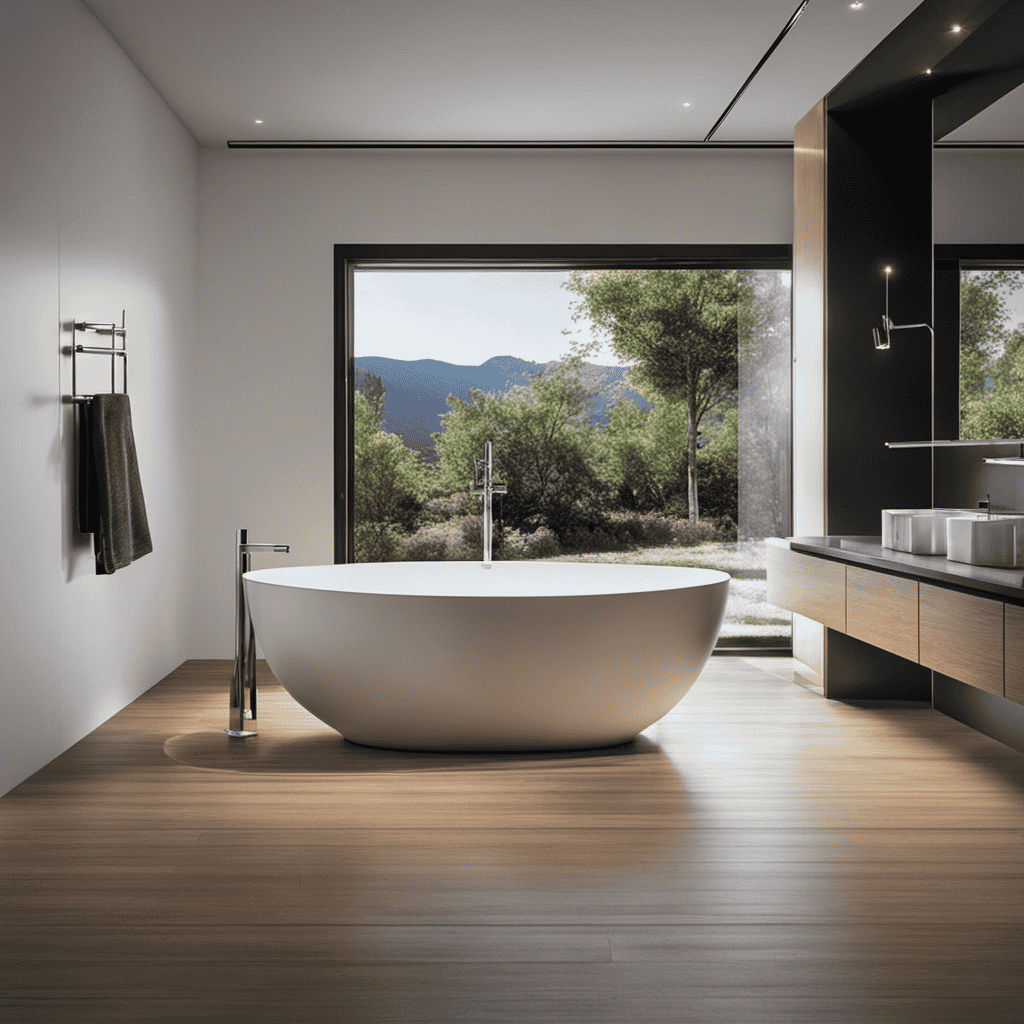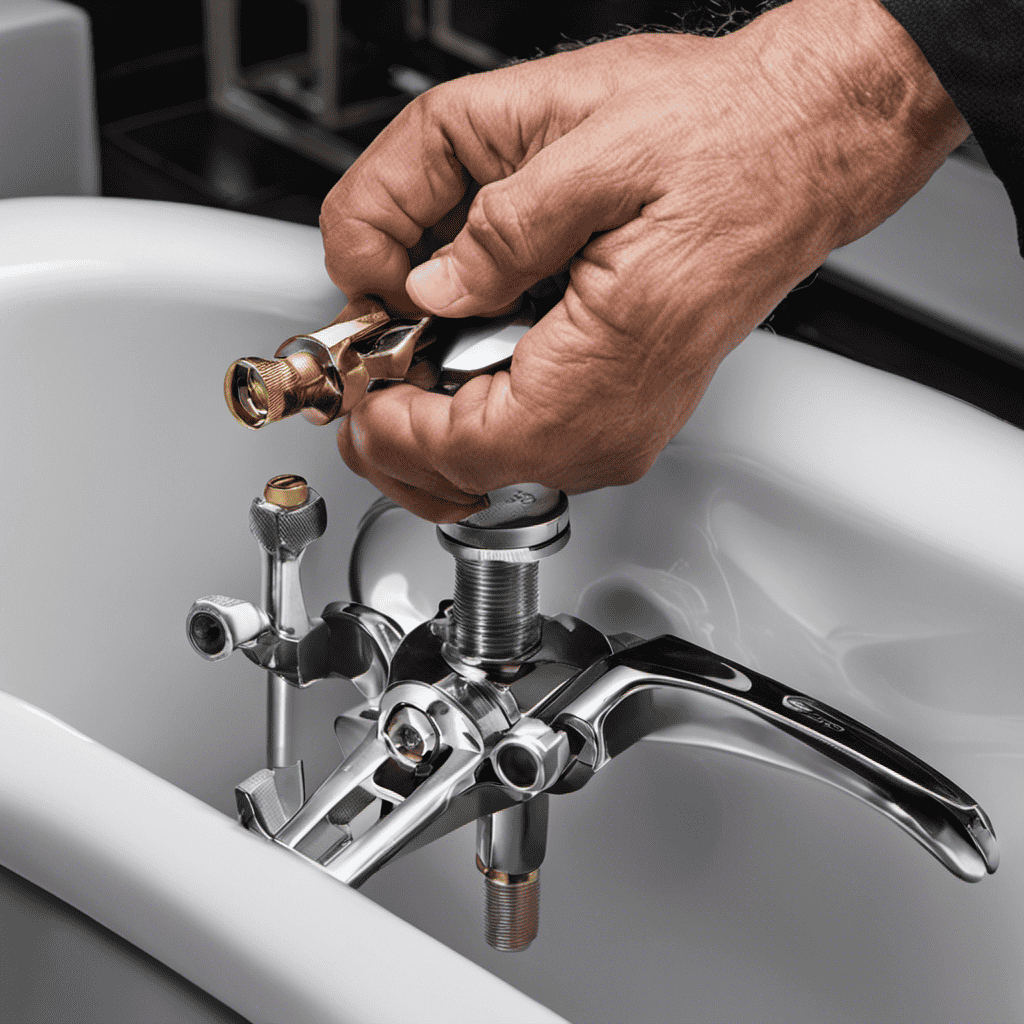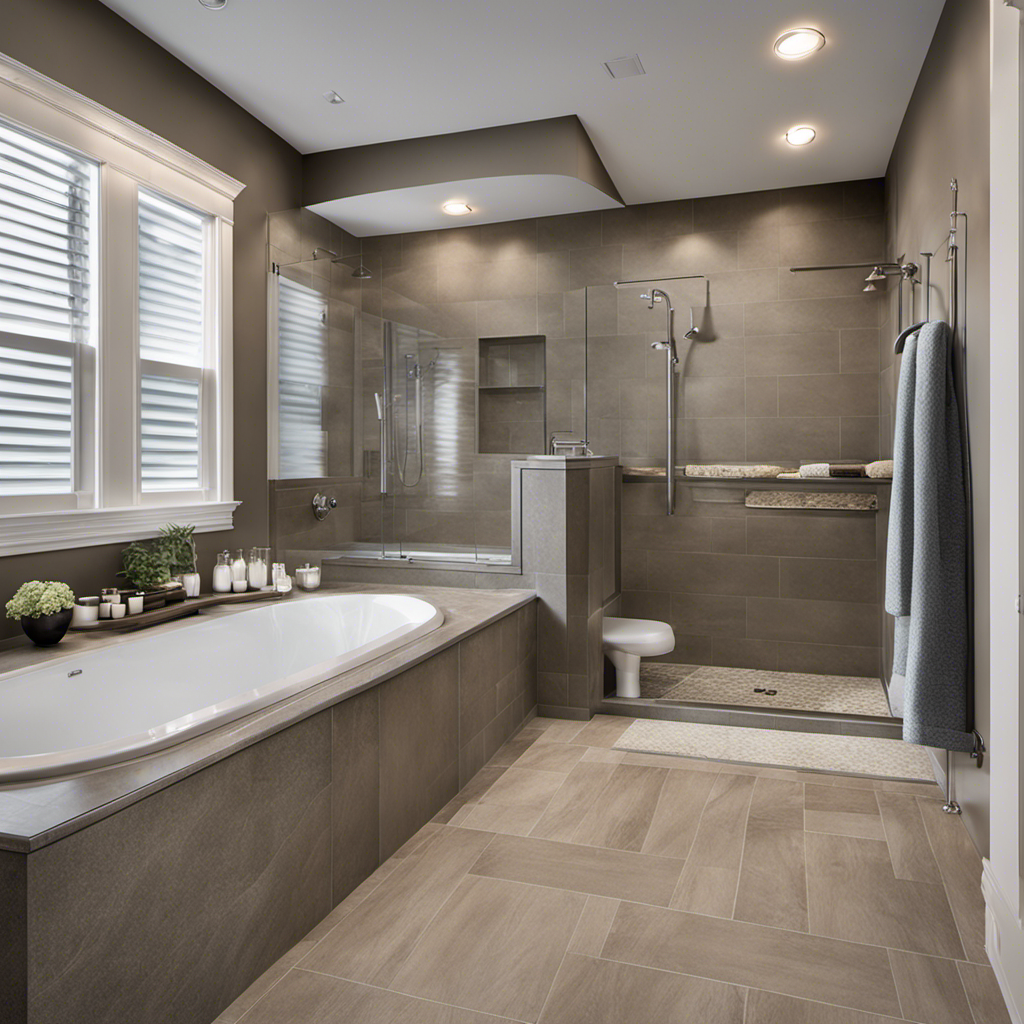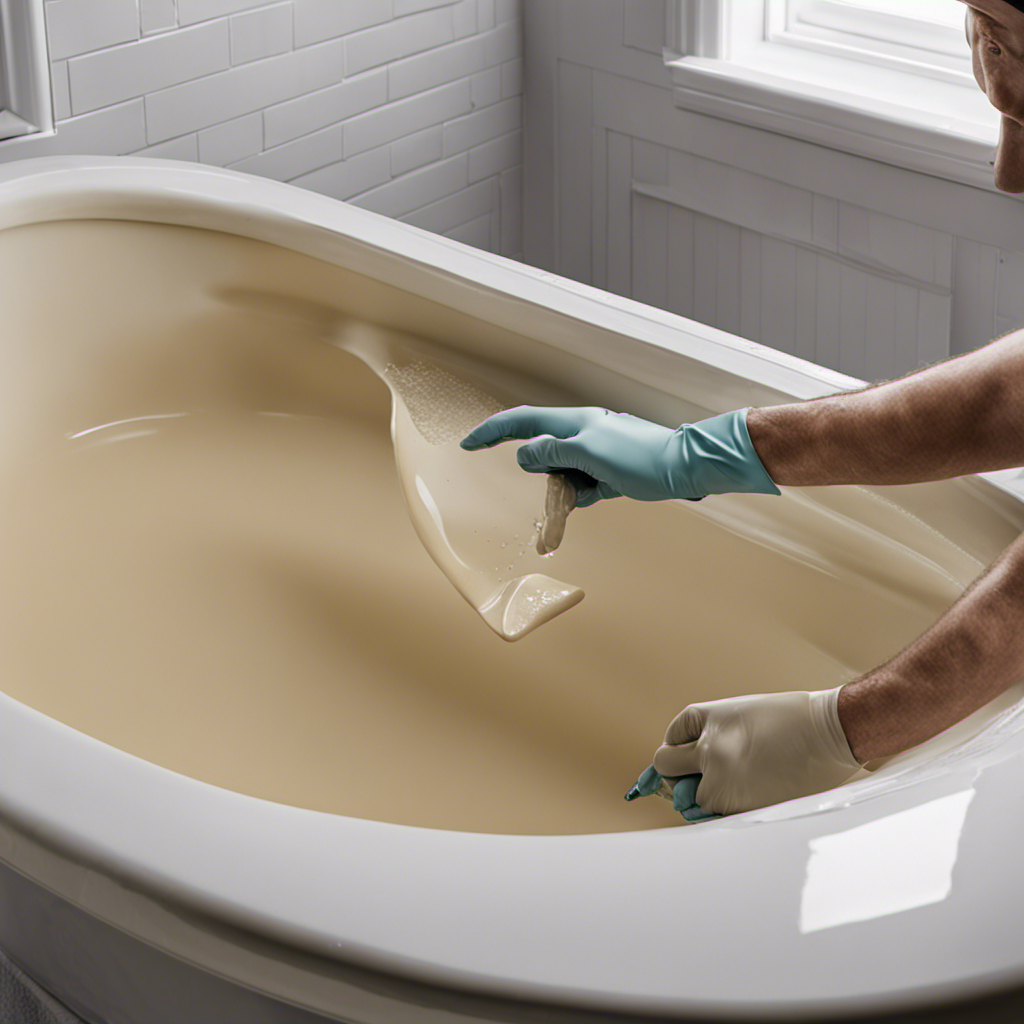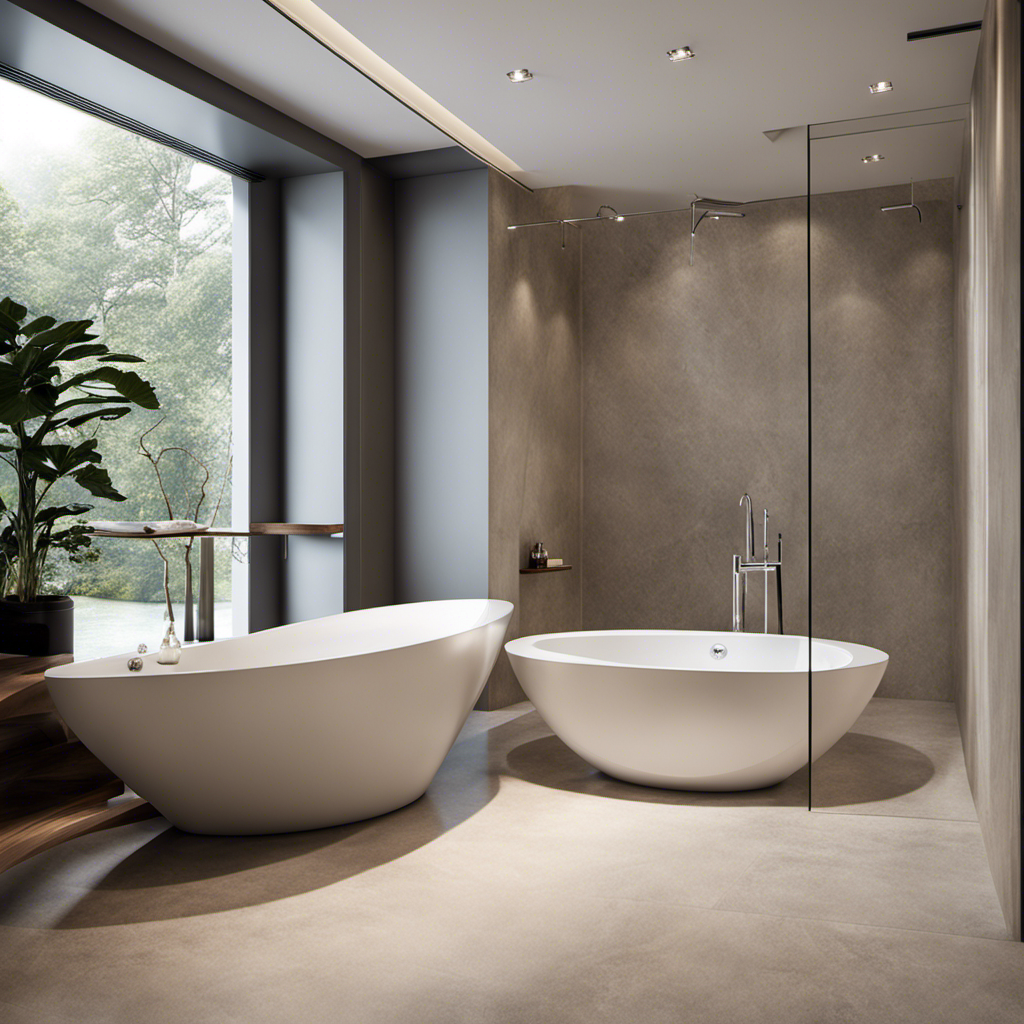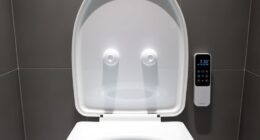Imagine stepping into a warm, soothing bathtub after a long day.
But have you ever wondered how many gallons per minute (GPM) your bathtub can fill?
In this article, we will delve into the world of bathtub flow rates, exploring the factors that affect GPM and the average GPM for different bathtub types.
Understanding GPM is crucial when selecting the perfect bathtub for your needs.
So, let’s dive in and calculate the GPM for your dream bathtub.
Key Takeaways
- Water pressure affects the flow rate of a bathtub, with higher water pressure resulting in a stronger flow and lower water pressure restricting the flow.
- The design and size of plumbing fixtures, such as the faucet and showerhead, impact the bathtub’s flow rate by either increasing or decreasing the amount of water that can pass through them.
- The size of water pipes directly impacts water pressure and flow rate, with a larger diameter pipe allowing for more water to flow through and a smaller diameter pipe restricting the flow.
- The average flow rate of different types of bathtubs depends on factors like size, shape, and design, with larger bathtubs and certain features potentially increasing or decreasing water flow.
Understanding Bathtub Flow Rate
The average flow rate of a bathtub is typically around 5-7 gallons per minute. This flow rate is influenced by water pressure and the role of plumbing fixtures.
Water pressure plays a crucial role in determining the flow rate of a bathtub. Higher water pressure results in a stronger flow, allowing more water to pass through the faucet in a given time. On the other hand, lower water pressure restricts the flow, reducing the amount of water that can be delivered per minute.
Plumbing fixtures, such as the faucet and the showerhead, also impact the bathtub’s gpm. The design and size of these fixtures affect the flow rate by either increasing or decreasing the amount of water that can pass through them.
Overall, the flow rate of a bathtub is determined by both water pressure and the characteristics of the plumbing fixtures.
Factors Affecting GPM in Bathtubs
One of the factors that affect the GPM in bathtubs is the size of the water pipes. The diameter of the pipes directly impacts the water pressure and flow rate. A larger diameter pipe allows for more water to flow through, resulting in a higher GPM. On the other hand, a smaller diameter pipe restricts the flow and decreases the GPM. The impact of pipe diameter on GPM can be better understood through the following table:
| Pipe Diameter (inches) | GPM |
|---|---|
| 0.5 | 2.5 |
| 0.75 | 5 |
| 1 | 10 |
As the diameter increases, so does the GPM. It is important to consider the size of the water pipes when determining the desired flow rate for your bathtub. By selecting the appropriate pipe diameter, you can ensure a sufficient water flow for an enjoyable bathing experience.
Average GPM for Different Bathtub Types
To determine the average flow rate of different types of bathtubs, you should consider factors like the size, shape, and design. Bathtub water consumption can vary greatly depending on these factors. The impact of gallons per minute (gpm) on water bills is significant.
When selecting a bathtub, it is important to understand the average gpm for different types. Here are three factors that can affect the average gpm of a bathtub:
- Tub Size: Larger bathtubs tend to have higher gpm due to their increased volume.
- Shape: The shape of the tub can impact the flow of water, affecting gpm.
- Design: Some bathtubs are designed with features that can increase or decrease water flow.
Considering these factors will help you make an informed decision about the average gpm of different bathtub types and ultimately the impact on your water bills.
Now, let’s explore the importance of gpm in bathtub selection.
Importance of GPM in Bathtub Selection
When choosing a bathtub, you should consider the importance of the average gallons per minute (gpm) in relation to your water bills. The gpm refers to the rate at which water flows from the faucet or showerhead.
Understanding the gpm comparison between bathtubs and showers is crucial in making an informed decision. Showers typically have a higher gpm than bathtubs due to their smaller size and the need for a steady flow of water. However, it’s important to note that the gpm of a bathtub can also be influenced by the water pressure in your home. Higher water pressure can result in a higher gpm, allowing the bathtub to fill up more quickly.
In the next section, we will discuss how to calculate the gpm for your bathtub, taking into account various factors such as water pressure and bathtub size.
How to Calculate GPM for Your Bathtub
Calculating the gpm for your bathtub can be done by measuring the time it takes to fill a container with water from the faucet. To do this, follow these steps:
- Fill a container with a known volume, such as a gallon jug, under the faucet.
- Start a timer as you turn on the faucet to fill the container.
- Stop the timer as soon as the container is filled.
Now, to calculate the gpm, divide the volume of water in gallons by the time it took to fill the container in minutes. This will give you the flow rate in gallons per minute.
Calculating the maximum flow rate is important for selecting the right bathtub. When you know the gpm, you can ensure that your bathtub’s water supply can meet your desired flow rate. By measuring water pressure, you can also determine if you need to make any adjustments to improve the flow rate.
Conclusion
To conclude, it is important to consider the flow rate of your bathtub when selecting the right one for your needs. Factors such as the type of bathtub and the water pressure in your home can affect the gallons per minute (GPM) of water that flows through your tub.
By calculating the GPM, you can ensure that you have enough water flow for a satisfying and relaxing bathing experience. Just like a gentle rain shower, the right GPM will provide you with the perfect amount of water for your bath.
